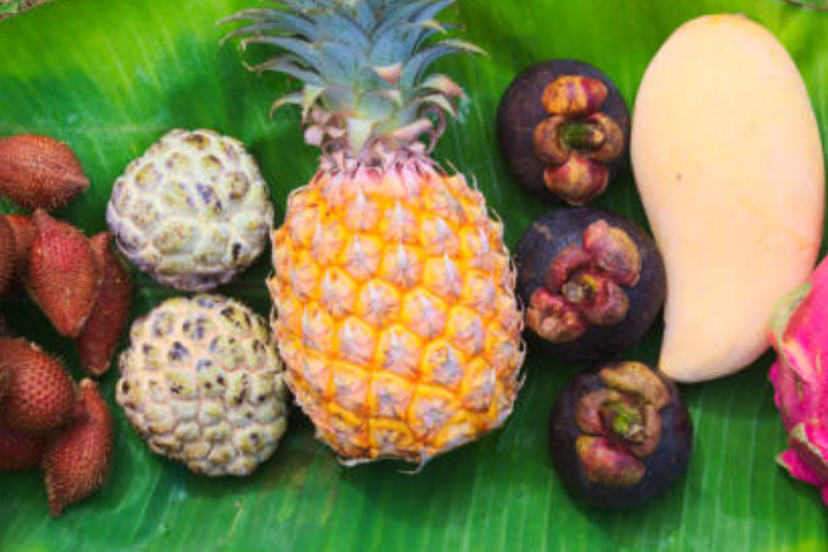Cultivating Tropical Fruits in Non-Tropical Climates
The allure of tropical fruits, with their vibrant flavors and exotic aromas, often seems reserved for those living in warm, tropical climates. However, with a bit of creativity and the right techniques, cultivating tropical fruits is not only possible but also rewarding in non-tropical environments. In this article, we’ll explore the exciting world of homegrown exotics, uncovering unique methods to successfully grow tropical fruits in non-tropical climates.
Understanding Non-Tropical Challenges: Embracing the Limitations
- Before diving into the cultivation of tropical fruits, it’s essential to understand the challenges posed by non-tropical climates. Factors such as temperature, sunlight duration, and humidity levels play crucial roles in the growth of tropical plants. By acknowledging these limitations, gardeners can adapt their strategies to create optimal conditions for successful cultivation.
Choose the Right Varieties: Tailoring to Your Climate
- Selecting the right tropical fruit varieties is a key factor in successful cultivation. Many tropical fruits have cultivars that are more tolerant of cooler climates. For example, choose cold-hardy varieties of bananas, such as the ‘Dwarf Cavendish’ or ‘Ice Cream’ banana, which can withstand temperatures lower than their tropical counterparts.
- Explore dwarf or patio varieties of tropical fruits like papaya and guava, which are well-suited for container gardening and can be brought indoors during colder seasons. Choosing varieties adapted to your climate sets the foundation for a successful homegrown exotic garden.
Container Gardening: Tropical Fruits on Your Patio
- Container gardening offers a practical solution for cultivating tropical fruits in non-tropical climates. By using containers, gardeners can control soil conditions, move plants indoors during cold spells, and create microclimates conducive to tropical fruit production.
- Consider growing dwarf citrus trees, passion fruit vines, or pineapple plants in large containers placed on sunny patios or balconies. This not only adds a touch of the tropics to your outdoor space but also facilitates the flexibility needed to protect plants from adverse weather conditions.
Microclimates: Mimicking the Tropics in Your Garden
- Creating microclimates within your garden can provide tropical fruits with the warmth and protection they need. South-facing walls, for instance, absorb and radiate heat, offering an ideal environment for heat-loving plants. Consider planting tropical fruit trees near structures that can absorb and reflect sunlight, creating a microclimate that mimics tropical conditions.
- Utilize mulch to retain soil moisture and regulate temperature, especially during colder nights. In regions with cooler temperatures, planting tropical fruits against a wall or using heat-retaining materials can help create a microclimate that encourages healthy growth.
Greenhouses and High Tunnels: Controlled Environments
- For dedicated tropical fruit enthusiasts, investing in a greenhouse or high tunnel can provide a controlled environment for cultivating exotic fruits. These structures offer protection from harsh weather conditions while allowing ample sunlight to reach plants.
- Equip your greenhouse with heating systems for colder seasons and provide shade during intense summer heat. This controlled environment not only extends the growing season but also opens the door to a wider variety of tropical fruit options, from dragon fruit to lychee.
Soil Amendments: Creating Tropical Paradise in the Ground
- In regions where planting directly in the ground is feasible, amending the soil to mimic tropical conditions is crucial. Tropical fruits thrive in well-draining, slightly acidic soils enriched with organic matter. Compost, coconut coir, and well-rotted manure can improve soil structure and fertility, providing an environment conducive to tropical fruit cultivation.
- Regularly check soil pH and nutrient levels to ensure they align with the preferences of your chosen tropical fruit varieties. Creating a nutrient-rich soil foundation sets the stage for robust and fruitful growth.
Seasonal Protection: Shielding Tropicals from Winter Chill
- In non-tropical climates, protecting tropical fruits during winter is paramount. Employ various strategies such as frost blankets, row covers, or even Christmas lights strategically placed around plants to provide additional warmth.
- Wrap the trunks of young tropical fruit trees with burlap or insulating materials to shield them from harsh winter winds. As temperatures drop, providing protection ensures that your homegrown exotics emerge unscathed come spring.
Embrace the Challenge: A Gardening Adventure
- Cultivating tropical fruits in non-tropical climates may present challenges, but it also offers a unique and rewarding gardening adventure. Embrace the learning process, experiment with different varieties, and celebrate the successes along the way.
- Consider joining gardening communities or forums to exchange experiences and tips with fellow enthusiasts. By approaching the endeavor with enthusiasm and a willingness to learn, you’ll find that growing tropical fruits in a non-tropical climate is not just feasible but can become a thriving and fulfilling part of your gardening journey.
Conclusion:
Homegrown exotics, once considered out of reach in non-tropical climates, are now within the grasp of adventurous gardeners. By selecting suitable varieties, utilizing container gardening, creating microclimates, and employing various protective measures, cultivating tropical fruits becomes an exciting and achievable venture. Whether you’re enjoying the fragrance of blooming passion fruit vines on your patio or savoring the sweetness of homegrown bananas, the world of tropical fruits can be yours to explore, even in climates that defy the tropics.

